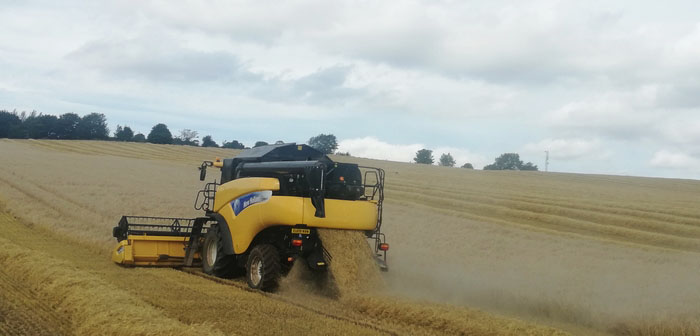With an average yield of 8.07 t/ha, LG Diablo was top for treated yield in trials undertaken by Scottish Agronomy on five different sites across the Borders, Fife, Aberdeenshire and Easter Ross over three years (2018-2020).
At 7.23 t/ha, it also topped the list for untreated yield.
“Approved as a malting variety, LG Diablo yielded more than the feed varieties,” reveals agronomist Donald Paterson of Scottish Agronomy.
The variety has also been given full approval for brewing and distilling in the UK.
“This means that growers opting for LG Diablo will get to choose whether they prefer to grow the crop as malting, brewing or feed barley.”
This effectively means deciding which N rate to apply, says Mr Paterson, explaining that malting barley receives lower levels of N applied up to the three-leaf stage of crop growth, rather than at later growth stages to minimise late nitrogen uptake into the grain.
“Feed barley, on the other hand, can often justify slightly higher rates of N.”
It’s important to recognise that spring barley is a fast-growing crop, and if key nutrition or micronutrients are deficient at any point in the crops’ life, yield potential will be compromised, says Ron Granger, Limagrain’s arable technical manager.
Mr Granger refers to work carried out over several years by Limagrain UK, on high yielding malting crops, that demonstrates the benefit of using higher nitrogen rates of up to 150 kg/ha based on a split nitrogen application of a standard 120 kg/ha in the seedbed, plus an additional 30 kg/ha at tillering, when compared to a standard seedbed application of 120 kg/ha.
“This approach produced higher yields, without exceeding grain nitrogen percentage.”
“Additional nitrogen input appears to be beneficial on the better soil types, but care should be taken on lower yielding and lighter soil types that are more prone to stress.”
“In these situations, the majority of the standard nitrogen regime should be targeted early in the plant’s life to secure better root growth for enhanced tiller survival.”
He points out that the newer, higher yielding varieties respond well to the higher nitrogen levels, as nitrogen grain content dilution is achievable.
“Macro-nutrients such as phosphate, potash, magnesium and sulphur, have also proved to be beneficial to the barley crop and should be applied either in the seedbed or soon after drilling, to promote strong rooting and early plant growth.”
Tissue analysis of the young growing crop is always useful for indicating any shortfalls of nutrition and is relatively inexpensive, if targeting a very high yielding crop, he adds.
“Additional micronutrients such as; manganese and copper applied at the stem extension phase of growth, also help to ensure a healthy canopy and good ear fertility, and in turn, help to secure high grain number, for maximum yield potential.”
“Macronutrients can be applied independently with other key inputs, or as in many cases, a multi-nutrient product.”
Mr Granger also recommends early PGR applications on crops, to promote additional rooting and strong, uniform tillering.
He adds that Limagrain agronomy work suggests the application of 2 fungicides should be targeted, if aiming for high yield potential from larger biomass crops.




